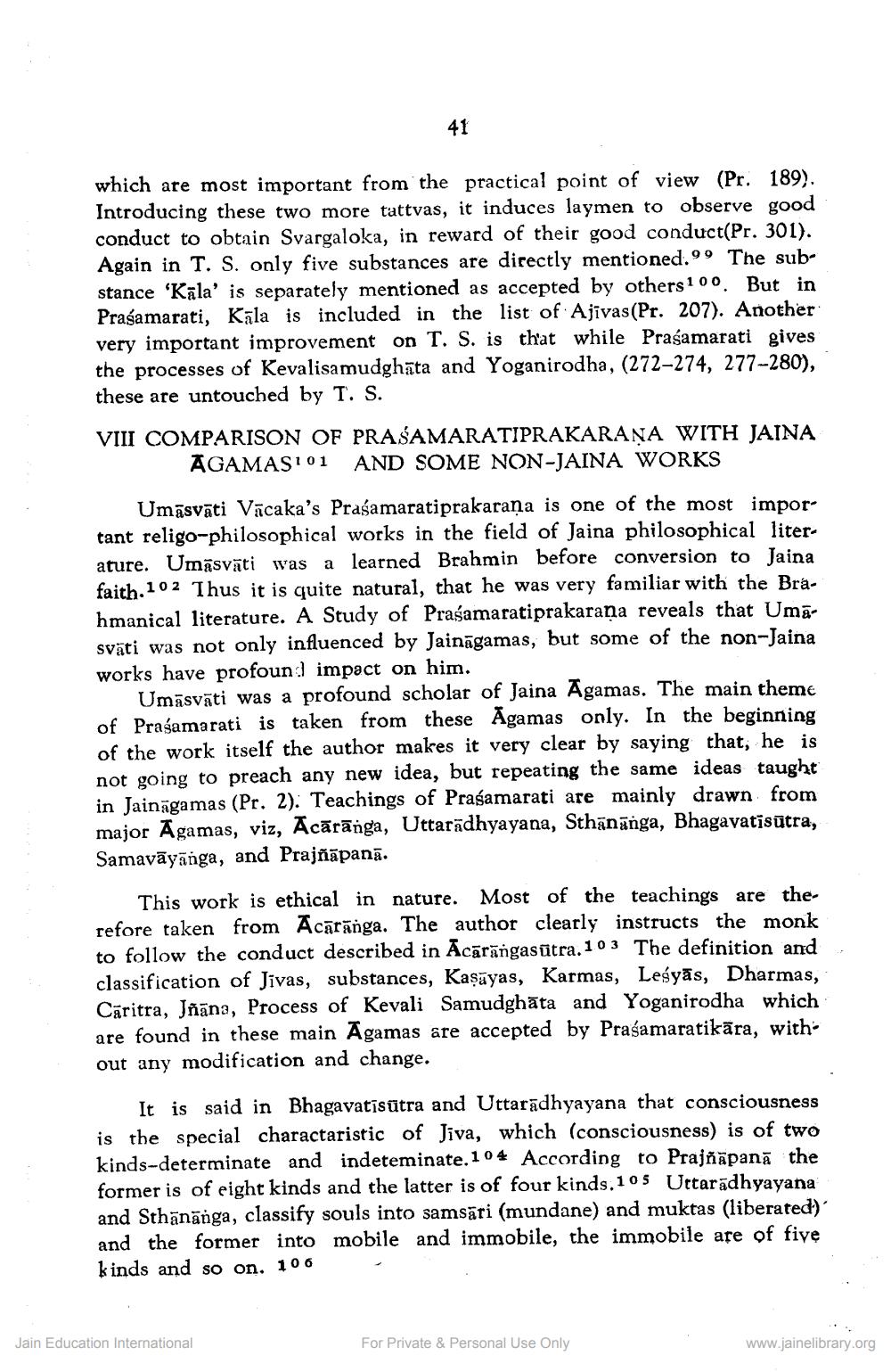________________
41
which are most important from the practical point of view (Pr. 189), Introducing these two more tattvas, it induces laymen to observe good conduct to obtain Svargaloka, in reward of their good conduct(Pr. 301). Again in T. S. only five substances are directly mentioned.99 The substance 'Kāla' is separately mentioned as accepted by others 100. But in Prasamarati, Kāla is included in the list of Ajivas(Pr. 207). Another very important improvement on T. S. is that while Praśamarati gives the processes of Kevalisamudghata and Yoganirodha, (272-274, 277--280), these are untouched by T. S.
VIII COMPARISON OF PRASAMARATIPRAKARANA WITH JAINA
AGAMASI01 AND SOME NON-JAINA WORKS
Umāsvāti Vācaka's Pragamaratiprakarana is one of the most important religo-philosophical works in the field of Jaina philosophical literature. Umāsvāti was a learned Brahmin before conversion to Jaina faith.102 Thus it is quite natural, that he was very familiar with the Brahmanical literature. A Study of Pragamaratiprakarana reveals that Umāsväti was not only influenced by Jaināgamas, but some of the non-Jaina works have profound impact on him.
Umāsvāti was a profound scholar of Jaina Agamas. The main theme of Prasamarati is taken from these Agamas only. In the beg of the work itself the author makes it very clear by saying that, he is not going to preach any new idea, but repeating the same ideas taught in Jainagamas (Pr. 2). Teachings of Pragamarati are mainly drawn from major Agamas, viz, Acārānga, Uttaradhyayana, Sthānānga, Bhagavatīsūtra, Samavāyanga, and Prajnapana.
This work is ethical in nature. Most of the teachings are therefore taken from Acārānga. The author clearly instructs the monk to follow the conduct described in Ācārāngasūtra. 10 3 The definition and classification of Jivas, substances, Kaşāyas, Karmas, Leśyās, Dharmas, Caritra. Jñāna, Process of Kevali Samudghāta and Yoganirodha which are found in these main Agamas are accepted by Prasamaratikāra, without any modification and change.
It
It is said in Bhagavatīsūtra and Uttaradhyayana that consciousness is the special charactaristic of Jiva, which (consciousness) is of two kinds-determinate and indeteminate. 104 According to Prajñāpanā the former is of eight kinds and the latter is of four kinds.105 Uttaradhyayana and Sthānānga, classify souls into samsari (mundane) and muktas (liberated) and the former into mobile and immobile, the immobile are of five kinds and so on. 106
Jain Education International
For Private & Personal Use Only
www.jainelibrary.org




